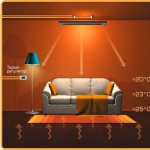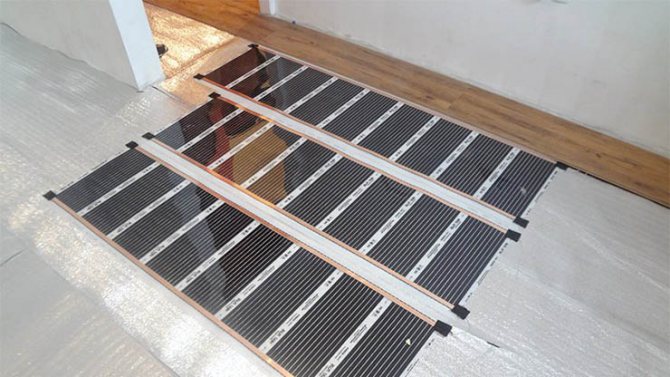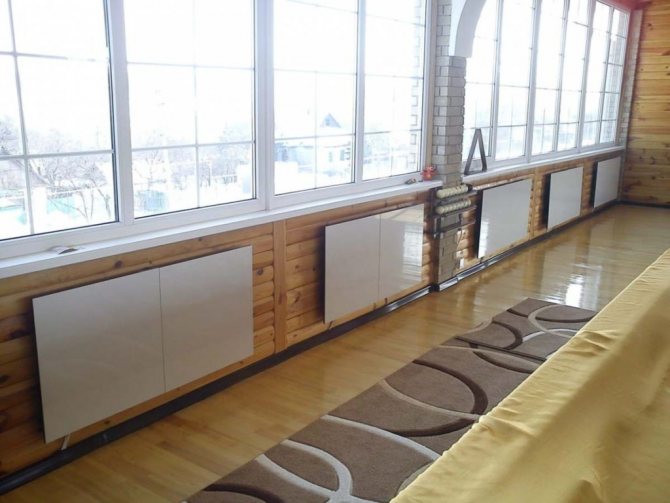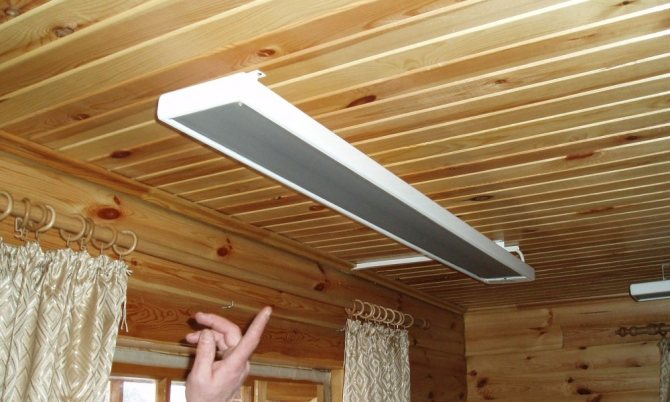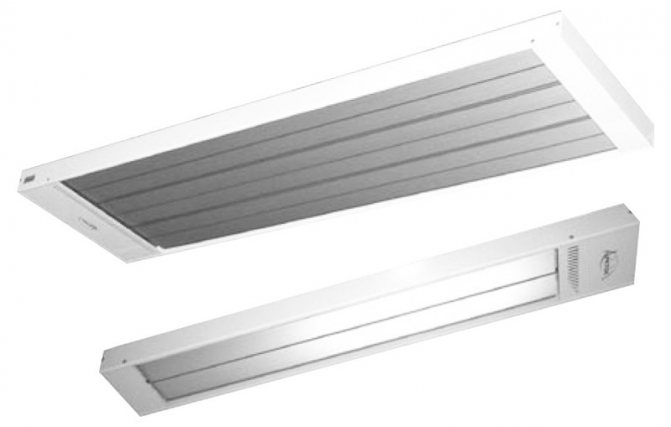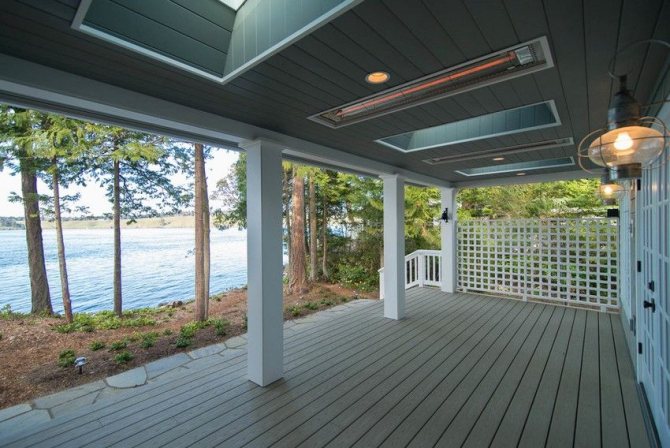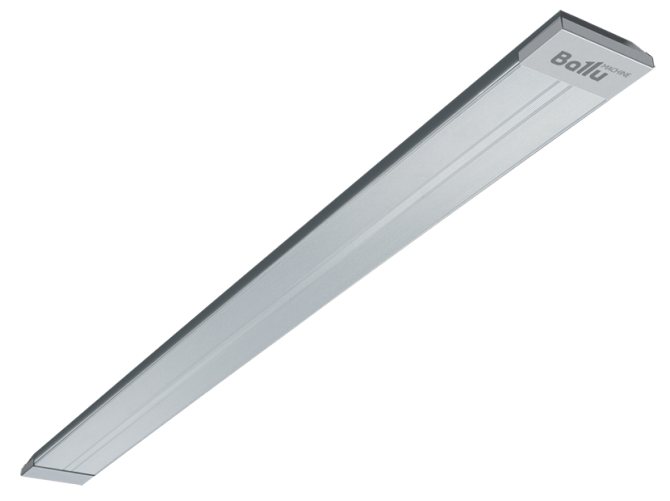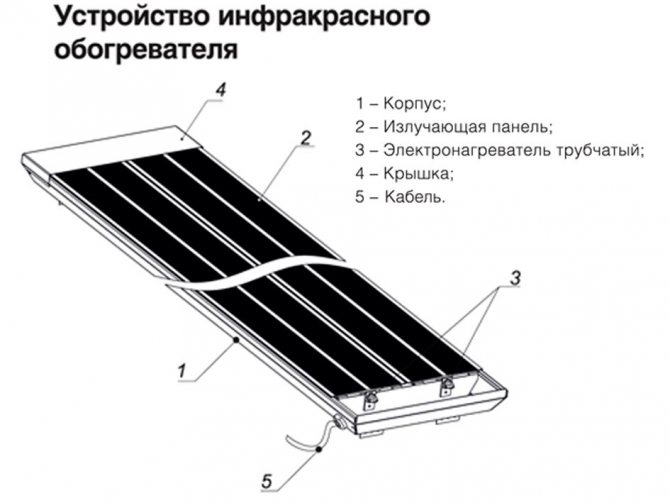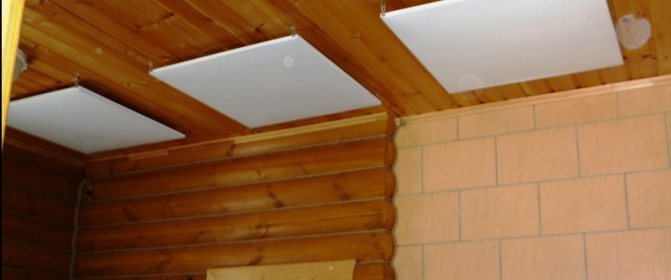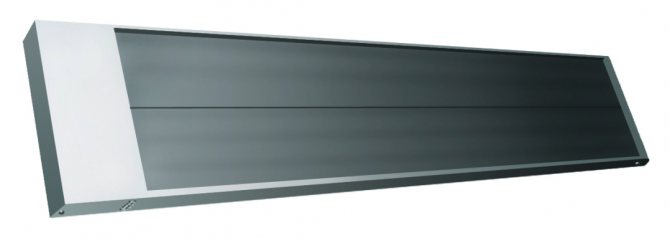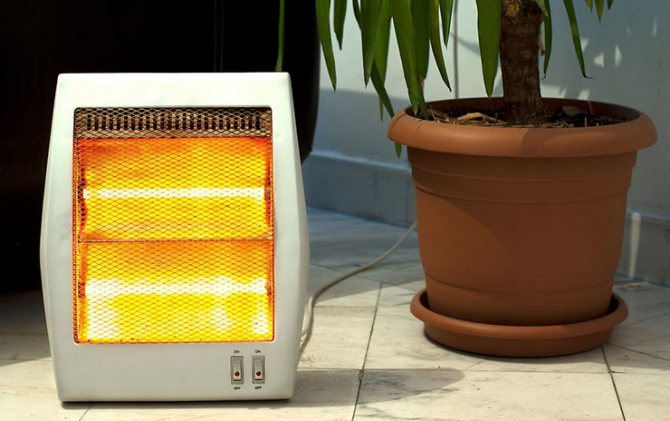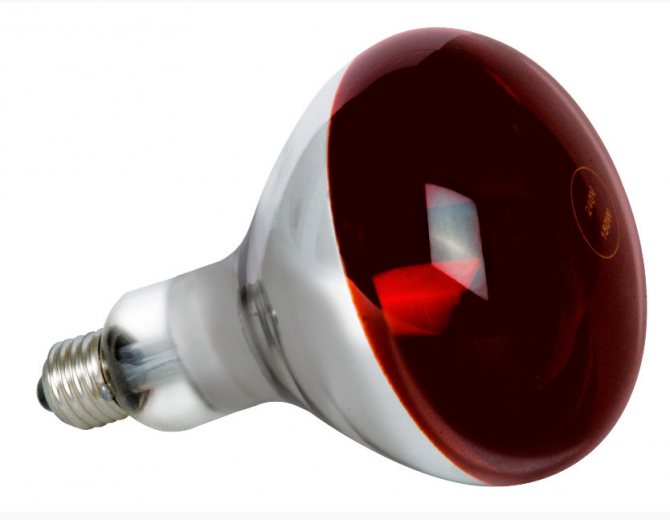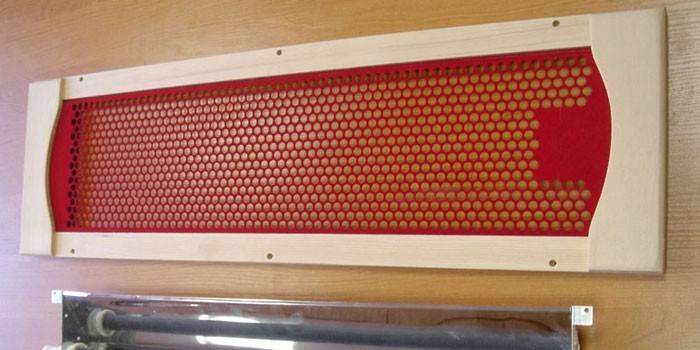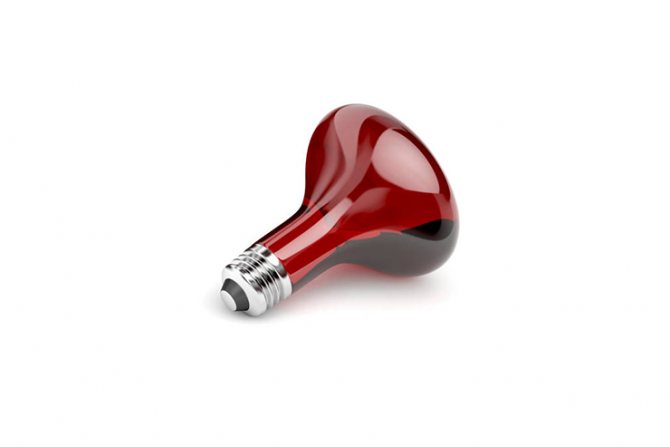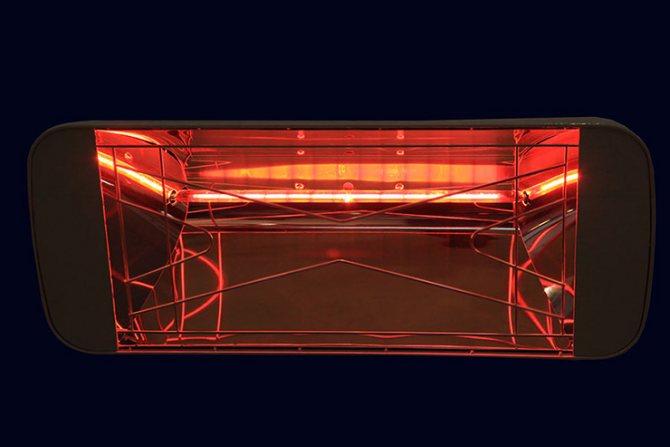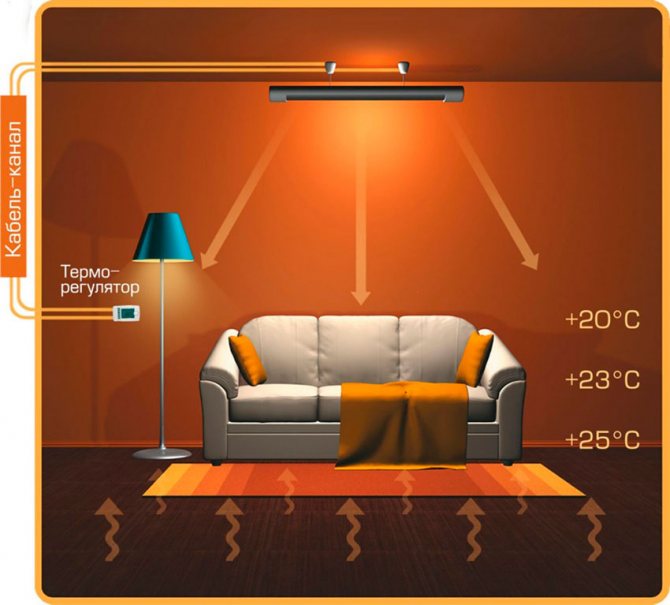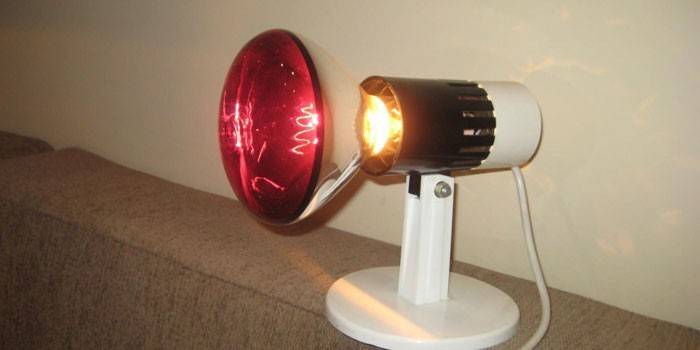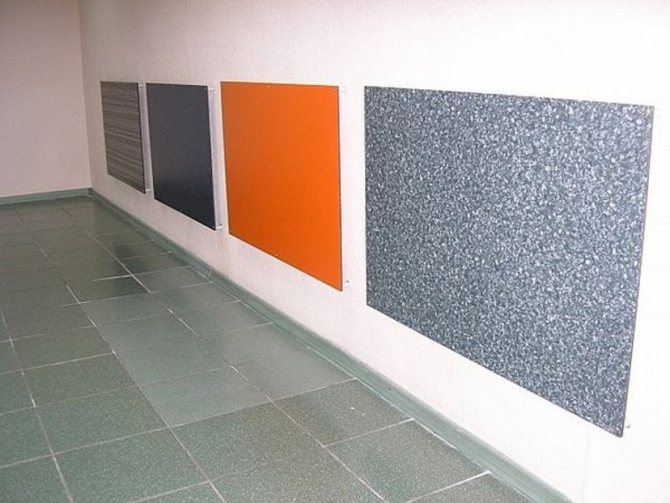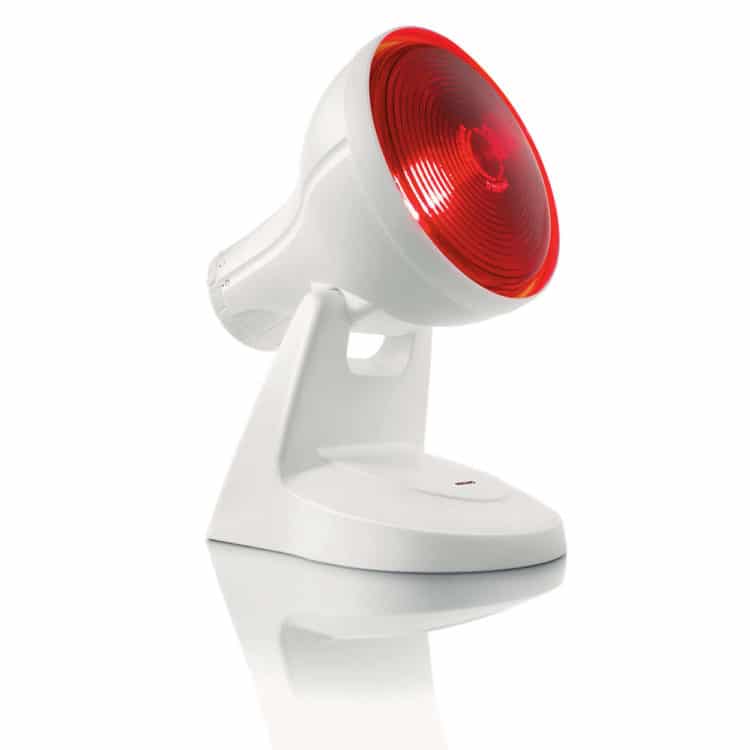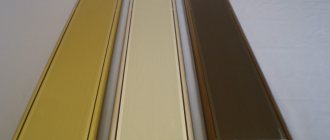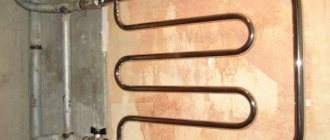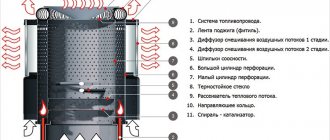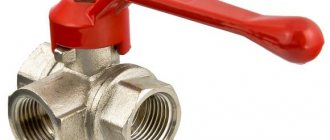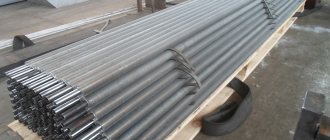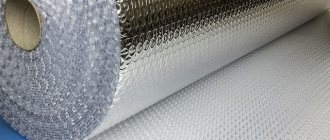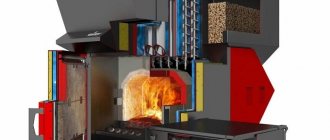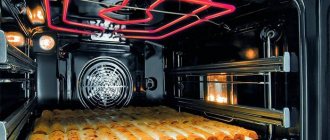Household infrared lamps as heating equipment are a promising and interesting solution. Agree: it is very nice to acquire a compact device with high efficiency, while also convenient to use. But you do not know what to be guided by when choosing an IR light bulb?
We will tell you how to choose the best IR light bulb for your home, summer cottage and subsidiary farm. In the article presented by us, the features of their device are considered, the pros and cons, the appropriateness of use are given. To facilitate the task, the best manufacturers with a reputation in the lighting market are listed for selection.
To help customers, the information is supplemented with photographs of IR lamps, video recommendations and useful tips. Taking into account our recommendations, you can easily find a device that is able to provide high-quality heat, comparable in characteristics to the sun's rays.
What is infrared heating?
IR lamps emit heat rays. Objects that are within the range of such devices absorb these waves, and then transfer the received heat to the surrounding air. The nature of infrared rays is comparable to the characteristics of ordinary visible light, insofar as they obey the laws of optics in the same way.
Although infrared waves have transparency, refractive index and reflection, like visible light waves, their specific properties have slightly different characteristics. For example, such radiation is difficult to overcome a layer of water only a few centimeters thick, but silicon wafers can easily pass it.
Aluminum reflects infrared rays much better than visible light, with a reflectance of up to 98%. This radiation is practically not absorbed by the air, and this provides a high level of efficiency for heaters of this type. But water vapor, ozone, carbon dioxide and other "fillers" can significantly spoil the case.
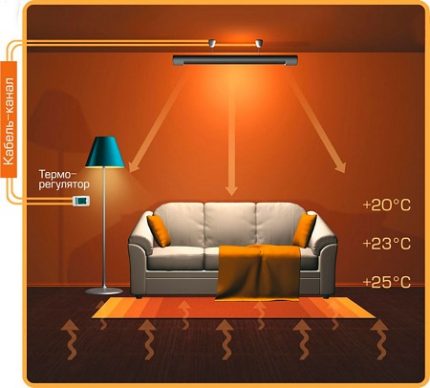
Infrared waves pass through the air space with practically no loss of thermal energy, which is absorbed by surrounding objects and spreads from bottom to top
Unlike convection heating, infrared waves do not heat the air around the device, but the surfaces of the objects to which they are directed. The air is already heated by these items. Understanding this principle will help you use infrared heaters correctly.
Advantages and disadvantages of the lamp
Home infrared lamps are used in infrared therapy. It is a physiotherapy specialization that uses the biological effects produced by AI in tissues for therapeutic purposes. The main effect is a pleasant sensation of warming, which in terms of sweating, vasodilation and a slight increase in heart rate is nothing more than a series of compensatory mechanisms activated by the average person while walking at a steady pace. Ideal for all those who are sedentary or unable to exercise.
The advantages of an infrared lamp include:
- Efficient use for heating residential and public buildings due to the thermal effect in the form of halogen devices.
- Generation of heat absorbed by tissues. Some of this heat is dissipated in the environment, while the rest is transferred to deep tissues.
- An increase in temperature in the treatment area, causing a secondary effect in the form of an increase in tissue metabolism, capillary vasodilation of arterioles and muscle relaxation.
- Therapeutic effect due to an increase in temperature in the irradiated tissues, which manifests itself in muscle relaxation.
- Anesthetic effect due to the removal of halogen substances from pathological tissues.
- The increased blood flow that follows vasodilation directs increased amounts of nutrients, oxygen, white cells, and antibodies to the tissues to help remove catabolites from the tissues. These biological modifications improve tissue tropism, aid in the repair of damaged tissue, and accelerate resolution of chronic inflammation.
- The healing effect.
It will be interesting for you Features of the incandescent light bulb
Important! If you are using any medication, you should consult your doctor before using the IR rays for treatment, as there are potential side effects - with a large dose of IR rays, they can cause skin damage and damage to unprotected eyes.
IR lamp device
An infrared lamp is designed not so much for lighting as for heating. To provide heat to the whole room or even the house, special heaters of various types and sizes have been created. IR lamps are more suitable for heat exposure to specific areas of the room.
The most common models of such devices are a glass bulb with a tungsten filament inside.
The mirror coating directs the flow of infrared radiation in the desired direction and increases the efficiency of the thermal effect. Most often, such a light bulb can be screwed into a standard E27 type cartridge and powered from a regular 220 V.
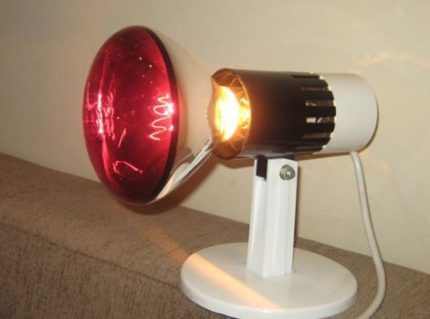

The infrared lamp consists of a bulb and a reflector, inside there is a filament. The device has a standard E27 base, which allows it to be used with suitable luminaires
The lamp power can vary between 50-500 watts. It is not recommended to use a plastic cartridge with such devices; it is better to take ceramics. The holder and lampshade for an IR lamp must withstand heating up to 80 degrees, not every plastic is capable of this.
For the same reason, it is not recommended to touch the switched on IR lamp, you can get a serious burn. A grill is used to protect against accidental touch.
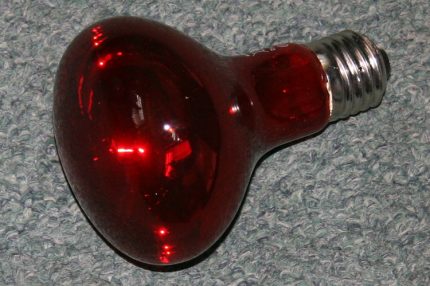

Traditionally, infrared lamps are colored red, but models with transparent glass are also popular. There are also blue IR lamps
The glass from which such a lamp is made can be standard, tempered or pressed. The flask is left clear, but is often colored red or blue.
Contrary to popular belief, blue coloration is not at all an exclusive feature of ultraviolet devices. The filament in IR lamps can be not only made of tungsten, some manufacturers use carbon for this purpose.
The reflector is marked as IKZK, IKZS and IKZ, which indicates red, blue or no staining. Separately, it is worth mentioning IR lamps, made not as a traditional bulb, but as a narrow tube.
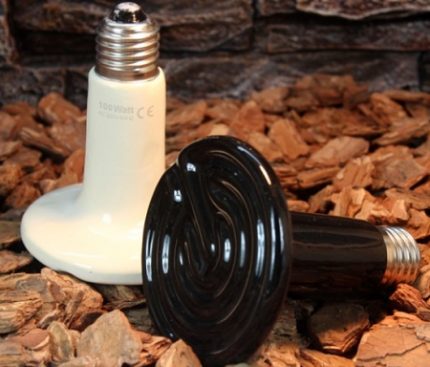

The ceramic infrared lamp bulb is more resistant to heat, moisture, temperature extremes and shock than glass counterparts
Finally, there is a very special kind of lamps of this type, they are equipped with a ceramic body and are intended only for heating where lighting is not needed.
Nichrome or fechral thread is used as a heating element in such devices. These are very strong and durable devices, they are not afraid of contact with splashing water. Such devices are widely used for night heating of young animals, as well as for keeping exotic animals at home: reptiles, snakes, etc.
Scope of application of the heat lamp
The properties of infrared lamps allow them to be used in various fields of human activity.
Household use
Rooms are heated with IR lamps. They are more often used as an auxiliary heating device if the main equipment does not work well.
Shortwave or mediumwave devices create a comfortable environment in the room in a few seconds.
Halogen IR lamps are great for outdoor heaters. They are installed near pools, in open areas.
Infrared heaters solve tasks that are beyond the power of other types of devices. With their help, in winter they create a thermal barrier that protects against cold radiation from windows, stained-glass windows, and large domes.
Along the way, such designs get rid of freezing. Infrared heaters melt snow on the porch, paths, and garage exits.
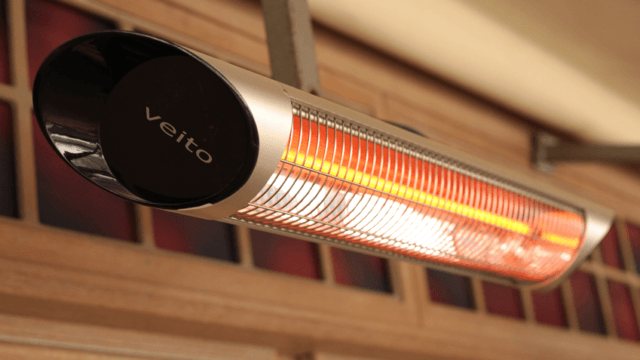

Greenhouse maintenance
Infrared lamps heat greenhouses well. Single bulbs are also adapted by hanging them above the plants. In any case, conditions are created similar to those that arise with solar radiation.
IR lamps compensate for the lack of light and heat, but use requires caution. If you exceed the power and duration of irradiation, plants may die.
Animal breeding
Infrared lamps have long been used in the poultry industry. Little chicks need warmth. Young growth accumulates under the lamp, warms up.
Similar devices are used for animals. When newborns are separated from their mothers, they are heated with low-power infrared lamps. The cages where animals are kept are pasted over with reflective material to increase the effect.
In severe frosts, villagers turn on IR lamps to heat the poultry houses, otherwise even adults can freeze. It is similarly used in winter in relation to nutria, rabbits and other animals.
Video on this topic:
Treating people
In medicine, devices with infrared lamps have long been used. They are also used for home treatments. Infrared radiation, acting on human skin, accelerates blood circulation, accelerates metabolism. The person's well-being improves.
The use is recommended for such diseases:
- colds: acute respiratory infections, rhinitis, tonsillitis, otolaryngological diseases;
- for pain and muscle spasms;
- arthritis in the joints;
- hypertension.
It is contraindicated to use for cancer, tuberculosis, purulent inflammatory processes. Not recommended for pregnant women, people with chronic lung and heart disease.
Features of choosing the right option
Most often, the IR lamp is designed for a standard E-27 cartridge, but there are other options, this point should be considered before buying.
In addition to the type of base, when choosing an infrared lamp, you should take into account such indicators as:
- wavelength IR radiation;
- power heating device;
- voltage nutrition.
Long, medium and short wave infrared radiation differ in the amount of heat and light. The brighter the infrared lamp shines, the shorter the radiation wave, and the farther the area of its penetration.
The heat of devices emitting long waves is considered to be softer in effect. Voltage problems usually do not arise, since household appliances of this type are traditionally designed for a voltage of 220 W in a regular network.
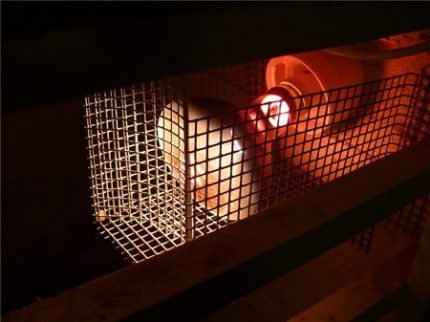

In order not to burn yourself on the surface of the infrared lamp, as well as to protect the device from damage, use protective grilles
As for the power, it is chosen depending on the size of the area that needs to be heated. For 10 square meters, it is recommended to take 1 kW of power. You can slightly increase the resulting figure, depending on the heat loss.
This is true for poorly insulated rooms, objects located on a cold floor, if old windows with cracks in cracked frames are installed in the room, etc.
IR lamps vary in shape and diameter and are labeled according to these characteristics.To understand the size of the product from the code, you will have to do some calculations. The numerical indicators that are indicated next to the letter code must be divided by 4 to obtain the dimensions of the diameter in inches.
The result obtained can be easily converted into centimeters. For example, for a PAR38 lamp, the calculation would look like this: 38: 4 = 4.75 inches; 4.75 * 2.54 = 12.07 cm.The letters indicate the shape of the flask, the meaning of the code is presented in the table:
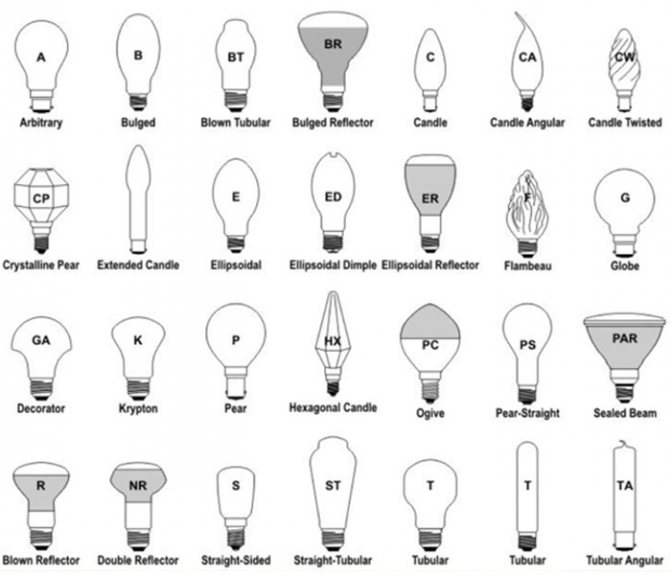

The shape of the bulb of an infrared lamp can be very different, this moment is reflected in the letter marking. The short body fits better under the lampshade to reduce glare
The R indicates the presence of a reflector. Such models are usually very simple in design. The glass part of the bulb, through which the radiation passes, is monolithically connected to the reflector; inside there is a layer of reflective paint. The illumination angle is over 45 degrees.
BR models are bulbs with a convex reflector coated with paint or other reflective material.
A transparent bulb combined with it can be glossy or matte, sometimes there is an option with cells that reduce the level of radiation scattering. These models also typically have over 45 degree lighting angles.
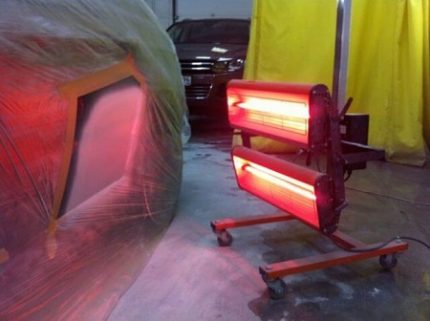

IR lamps are well suited for even and gentle drying of various surfaces that have been painted or varnished
PAR models are equipped with an aluminum coated parabolic reflector. Attached to it is a tempered glass bulb with a honeycomb structure. The precisely calculated shape of both elements ensures complete tightness of the device.
Usually, such models are slightly shorter than the analogs described above, they are considered more reliable and suitable for operation in difficult conditions.
Characteristics
The main characteristics of infrared lamps are as follows:
- incandescent temperature - 600;
- maximum operating power - 500 W;
- mains voltage - 220 V;
- infrared wavelength range - up to 5 microns;
- service life - up to 6000 hours.
Choosing IKZK lamps for heating in the house, you should calculate their number based on the power rate of 1 kW per 10 m2. This standard is used for insulated rooms with plastic double-glazed windows, as well as with insulation laid along the floor, ceiling and doorway. If there are non-insulated places in the room through which cold can penetrate into the room, you will have to increase the number of heating devices or their power.
Benefits of infrared heating
As already mentioned, infrared lamps are used for spot heating of individual zones. Although in crop or livestock farming, several lamps can fully meet the heating needs of a greenhouse, chicken coop, etc. A winter garden, a balcony, a free-standing kiosk, and other similar objects can be advantageously heated using IR lamps.
Here are the main advantages of this type of device:
- compact size;
- easy installation;
- high efficiency;
- heat spread without the use of fans, etc.
The air practically does not absorb infrared waves, which deliver heat directly to the heating object. As a result, it is not necessary to direct the heated air currents so that they spread throughout the room, as is done with convection methods. Even if the lamp is located close to the ceiling, the heat will reach the target.
Such a heater does not require oxygen to operate, therefore its presence has a beneficial effect on the atmosphere in the room.
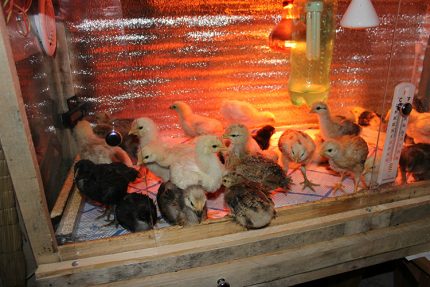

When raising chickens, infrared heating is a must. At night, you can use a ceramic lamp that does not give off light
Due to the lack of convection, dust also does not move through the house. Infrared lamps are not difficult to store as long as they are only used seasonally.To install or dismantle the device, you just need to screw it into the cartridge or unscrew it from it.
The device does not require special storage conditions; with careful handling, it more than fulfills the resource laid down by the manufacturer.
Such lamps are convenient to use if you need to heat a specific place. For example, if the balcony turns out to be too cold in winter, a couple of small lamps will help to quickly solve the problem, and in the summer they can be simply removed and hidden. It is also worth remembering the beneficial effects of infrared radiation on human health.
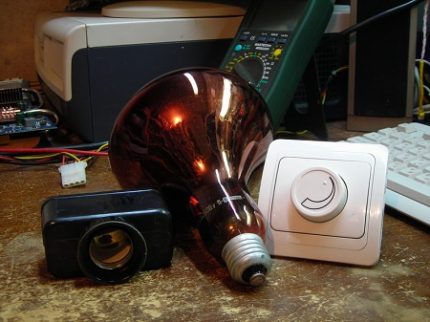

If you equip the infrared lamp with a temperature controller, you can change the heating intensity depending on the situation.
They are used for medicinal purposes in medical institutions, but the healing effect does not disappear at home either. Although there are medical devices for treatment, household lamps are not suitable for this.
Another advantage of infrared lamps is the ability to easily change the height of the luminaire above the floor. This point is especially relevant when growing plants and young animals.
Which is better wall or ceiling panels
On sale you can find various types and sizes of such products, and on thematic forums about infrared heating panels, reviews often come across contradictory. Some buyers note the efficiency and simplicity of the device, while others say that they provide little heat. What is the best choice?
Ceiling infrared heating panels are designed for rooms with a height of at least 2.5-3 m - in any case, it is desirable that at least 50 centimeters remain between them and the head of a person of average height. In a very small room, they may not be very comfortable, but they are a good option for large rooms in which only zone heating is required.
Ceiling panels emit heat, which does not heat the air, but is transferred to objects, and the heat will be felt differently. It will be hotter at the top of the room and colder at the bottom.
Wall panels are a good addition to a large room that lacks warmth from conventional heaters. They can be placed in several areas of the room for constant uniform heating, or they can be hung in only one area where the most heat is needed.
For example, if you need additional heating in your bedroom, you can place such a panel near the bed. This will allow you to enjoy the warmth and comfort during a cozy evening, while the cost of additional heating will be small.
In any case, both the one and the other option will be more effective than the usual convective heating. If you put ordinary batteries in the room, the air will constantly circulate around the room: it warms up from the radiator, rises, cools down, falls.
Because of this, the heated air is always at the top, and the floor will be cold. Installing infrared panels will allow you to forget about this drawback, since the surfaces themselves warm up first of all, and then they give off heat to the home atmosphere.
Appropriateness of lamp heating
Such lamps are widely used in animal husbandry, both in the industrial sector and in small households. Infrared lighting is almost indispensable for raising newborn offspring. It creates a suitable temperature, gently dries bedding materials, and produces a disinfecting effect.
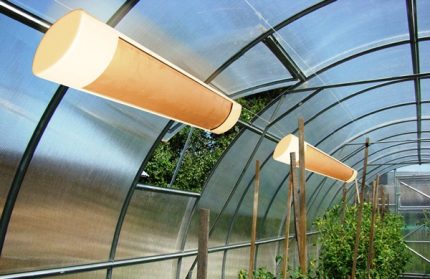

Heating with infrared lamps is widely used in greenhouses. To service one room, several lamps are usually used, which are suspended at some distance from each other.
For piglets of the first week of life, it is recommended to use a lamp of the IKZK-250 type, the height of the suspension from the floor is 50 cm. In the next two weeks, the lamps are raised by another 25 cm, then this distance is brought to one meter.At this height, this model can heat approximately one square meter of area.
For raising chickens, an infrared lamp should be used, which can heat the cage to 23-32 degrees. During the day, the temperature should change, so you need to install a thermometer in the cage, and outside - a thermostat that will change the intensity of heating.
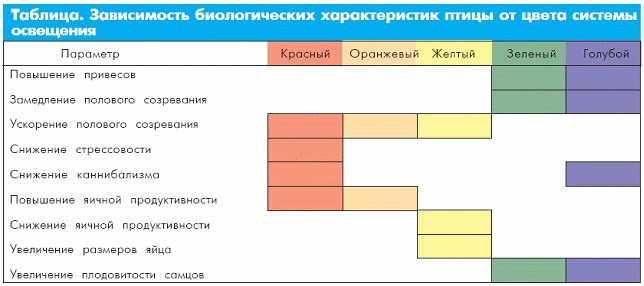

Scientist Mark O. Nore argues that different colors of lighting can significantly affect the development and behavior of young poultry.
Some believe that red bulbs should be used for the first 20 days of chicks' life to reduce stressors on the chicks. Route the wiring around the outside of the cage. It is recommended to use luminaires with a protective grill to protect the chicks from burns and the glass from damage.
Periodically, after cooling down, it is necessary to clean the surface of the device with a damp cloth from dirt, otherwise it will work with increased load and may burn out too quickly. For chickens, do not take cheap lamps with thin bulbs that burst on accidental contact with water droplets.


Infrared heat is very beneficial for young pets. Such lamps allow you to adhere to the optimal temperature regime, prevent the development of diseases, strengthen the immune system.
In small home greenhouses, the level of heating depends on the needs of the crops that are grown there. You will need several lamps, usually the distance between them is about one and a half meters. The lamps are suspended in such a way that the height can be changed: they are lifted up as the plants grow to avoid overheating.
In addition to these areas, infrared radiation is also successfully used in the construction and automotive industry for drying various surfaces. IR light is also applicable for drying herbs, spices, food, etc. Another option is to warm up the plastic for molding work.
Principle of operation
The principle of operation of solar cells is to generate electrical energy, they do not accumulate or form it in any way. When the rays of the sun directly hit their surface, they are immediately converted into current and removed from the panel.
Each plate can generate 250 W, therefore, to improve the principle of operation, they are trying to be installed closer to each other. The current obtained as a result of photosynthesis, through the distributor enters the batteries, and then into the inverter of the power grid of the house.
It should be noted that the volume of solar batteries affects the duration of the daily operation of the batteries. The batteries are recharged during the day, while the energy generated in the last day is being used.
The principle of operation is simple, and at the same time effective due to the "semiconductor". A semiconductor contains atoms that can, thanks to an external electron, capture or reflect other electrons. As a result, the surface of solar cells is covered with this material. This "semiconductor" is Selenium and Silicon.
Presentation of popular manufacturers
The market for IR lamps is wide and varied. According to consumer reviews, products from well-known manufacturers such as Philips, InterHeat and Osram are highly popular.
The not the lowest price for IR lamps is fully compensated by the increased reliability, modern design and long service life.
Manufacturer # 1 - Philips
These are the characteristics of the Philips models. They can be safely used where there is a danger of exposure to water spray: in bathrooms, in kitchens, in livestock buildings.
Philips PAR lamps reduce heat consumption by up to 30% compared to peers with an improved reflector. Approximately 90% of electricity is converted to infrared radiation. These products are characterized by increased durability.
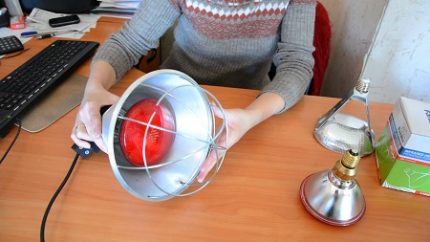

Infrared lamps are compact and lightweight compared to other types of heaters, they are easy to install and remove
Manufacturer # 2 - Osram
Osram SICCATHERM products demonstrate high efficiency. The power of the lamps varies from 150 to 375 watts. They are designed for use with a standard E27 base with an illuminance angle of 30 degrees.
Red flasks in this line are marked as RED, matte ones are designated by the letters FR, and transparent ones - CL.
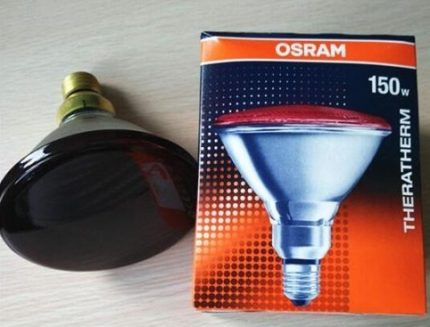

The manufacturer Osram has established itself in the lighting market as a conscientious and reliable supplier.
Most often, such lamps are used in animal husbandry, as well as for drying painted and varnished surfaces.
Manufacturer # 3 - InterHeat
InterHeat IR lamps are versatile, almost all of them fit a standard base. Their distinctive feature is the increased resistance of the glass bulb to splashes and accidental impacts.
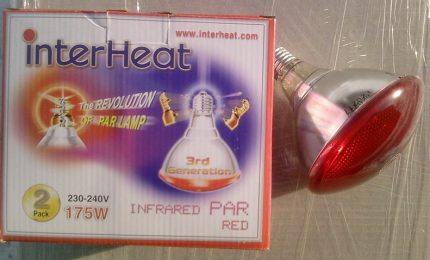

High power bulbs from InterHeat have proven to be robust and durable when used in livestock buildings
These lamps have found wide application in the field of raising young animals and poultry. The bulb can be transparent or red, the power of the heaters varies in a wide range and can be from 100 to 375 W.
Film type infrared heating (PLEN)
Another type of infrared heaters is a film resistive foil sheet. It is known to many consumers as infrared floor heating. Although in most cases this film is placed under the final floor covering, it can alternatively be placed over the entire ceiling or on the walls.
Film-type heating systems have one installation feature - they should not be placed on top of walls or ceilings, but between the finishing cladding and a layer of thermal insulation.
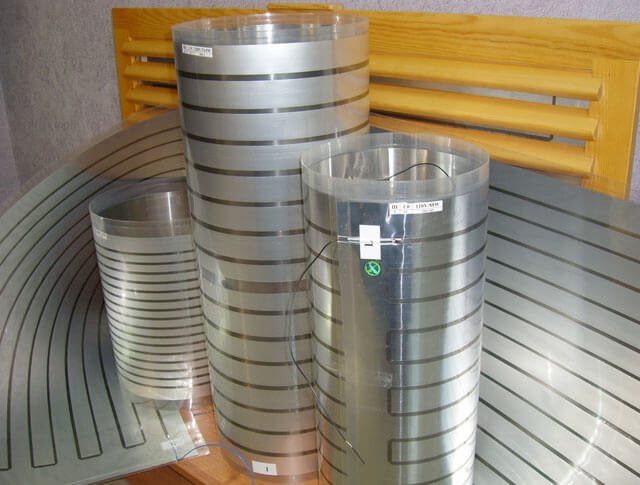

Thanks to this approach, the use of film heating will be as efficient as possible and will reduce heat loss to a minimum. At the same time, the heating elements of the heating system will not be visible on the surface, so that the consumer can embody even the most daring design projects in his home, in which there is no place for traditional floor or suspended heaters.
Practice shows that the equipment of a residential building with infrared film heating devices helps to save energy and financial resources of the consumer up to 40%.
We hope that the information provided on infrared lamps for heating will be useful for the consumer, so that he can independently determine the type and number of heating devices for his home.
How does it work
The IL design is made in the form of two reflector tubes and water cooling. The double tube heat lamp has two tubes with filaments for higher radiation intensity. The reflector design has a built-in reflector to direct the light in the desired direction. ILs with water cooling show the best performance.
The principle of IL operation has a natural basis. The sun is the most powerful natural source of infrared radiation. With its rays, it heats up the walls of building objects, and only then the thermal energy from them is transferred to the air. Thus, it is not the air that heats up, but the building material.
Note! Infrared heaters for heating buildings work on the same principle. They generate infrared rays, which instantly reach objects with practically zero loss, are absorbed in them, with subsequent conversion into heat.
Heating lamps, such as the IHW10 infrared halogen heater, are built in a similar way.When voltage is applied to its heating coil, it heats up, and infrared rays are formed that enter the room. The bright glow of the device, with short-wave radiation and a longer range, covers a significant volume of the room with heating. Long-wavelength ILs are less bright and generate “soft” thermal energy.
It will be interesting to you Comparison of bulbs DNAT and DRL
How to apply correctly
Before starting the warm-up procedure, install the lamp in a convenient place near a household outlet so that you can comfortably approach it.
How to use an IR lamp:
- Before starting the procedures, a sound timer is always set, since during warming up the person relaxes and can fall asleep. The patient is positioned at a distance of 30 to 50 cm from the heater.
- During the session, the direction of the device or the body is changed in order not to be burned.
- The heating temperature should be comfortable, the heating is carried out until slight reddening of the skin, the duration of the procedure is agreed with the attending physician.
- Usually, a procedure is used from five to ten minutes per session.
It will be interesting for you Features of DRV lamps
Warnings during use:
- You cannot use the head heating procedure for more than 5 minutes in one session, the interval between procedures should be at least two hours.
- It is forbidden to look at the emitter.
- It is necessary to move or disconnect the device if a burning sensation is felt.
- It is not recommended to use the device in case of injury within the first 24 hours.
- Before the procedure, do not use essential oils, lotions or creams that can cause burns.
- Do not touch the IL when it is hot.
- Do not screw the device too tightly into the base, otherwise it may burst.
- Infrared therapy is contraindicated in certain skin cancers that may be exacerbated by intense light.
Conclusions and useful video
Infrared heating is hardly cost effective to heat a large home. But it is well suited for additional, spot heating. With its help, it is easy to organize heating where there is only electricity. In addition, ILs are convenient in plant growing, animal husbandry, drying varnishes and paints.
- Similar posts
- What is and what are fluorescent fluorescent lamps
- All about smd LEDs (parameters, check and soldering)
- The device and features of the CFL lamp

